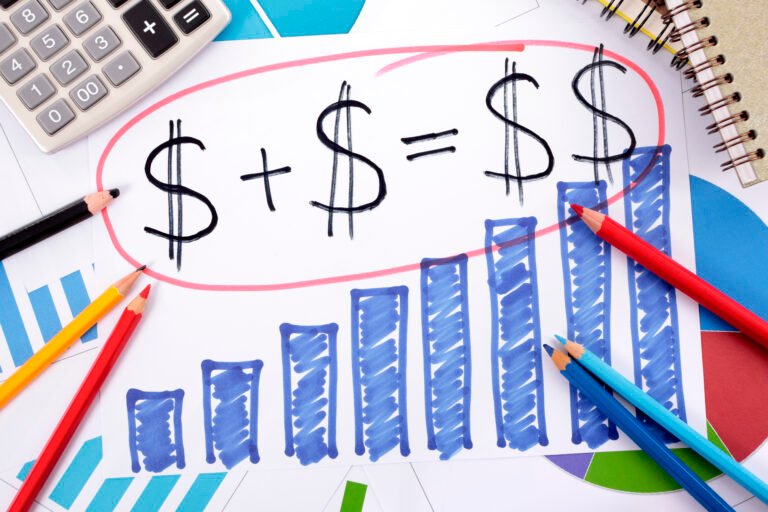Capital Gains Estimator
Estimate your capital gains from investments with ease and clarity
Capital gains represent the profit earned from selling an asset at a higher price than its original cost — and understanding how they’re calculated is vital for effective tax planning. Whether you’re dealing with stocks, real estate, or other investments, the timing and size of a sale can significantly impact your tax liability. Factors such as holding period, applicable tax rates, and available exemptions or deductions all play a role in determining your final obligation. Accurately estimating capital gains helps you plan better, avoid surprises during tax season, and make smarter decisions about when to sell or reinvest. It’s a critical step for anyone building long-term wealth through strategic asset management.
Benefits of
Estimating Capital Gains Accurately
Understanding your capital gains calculations helps you:
💰 Capital Gains Estimator
Meet Emma
Example Scenario
Emma recently sold shares of a tech stock she had held for over three years. She originally purchased the shares for $8,000 and sold them for $15,000. She wants to understand her capital gains tax liability before investing the proceeds elsewhere.
She enters the purchase and sale price, holding period, and filing status into the Capital Gains Estimator.
| Capital Gains Breakdown | Amount |
|---|---|
| Original Investment (Cost Basis) | $8,000 |
| Sale Proceeds | $15,000 |
| Capital Gain | $7,000 |
| Holding Period | 3+ years |
| Tax Type | Long-Term |
| Estimated Tax Rate | 15% |
| Tax Owed | $1,050 |
➡️ Net Profit After Tax: $5,950
Emma learns that because she held the asset for more than one year, she qualifies for a lower long-term capital gains rate. She uses this insight to compare the tax impact of selling other investments held for shorter periods.
💡 With a clear tax estimate, Emma feels more confident reinvesting her gains. The calculator helps her plan better and avoid tax surprises — turning investment strategy into informed action.
How the Capital Gains Estimator Works – Simple Math Explained
✅ 1. Enter Your Asset’s Purchase and Sale Price
Start by entering how much you paid for the asset (cost basis) and how much you sold it for. This could be from:
- Stocks or ETFs
- Real estate
- Cryptocurrency
- Collectibles or business assets
Formula:
Capital Gain = Sale Price − Purchase Price
✅ 2. Select Holding Period and Tax Details
Your holding period affects how much tax you owe. The tool identifies:
- Short-term gains (assets held under 1 year)
- Long-term gains (assets held over 1 year)
- Your country’s capital gains tax rules (e.g., US/UK)
Formula:
Tax Type = Based on Holding Period + Filing Status
✅ 3. Get Estimated Tax Owed and Net Profit
You’ll see:
- Estimated tax liability based on gain
- Net amount you’ll keep after taxes
- Optional state or region-specific rates
Formula:
After-Tax Profit = Capital Gain − Estimated Tax
💡 This tool helps investors and sellers make smarter decisions by understanding how much of their profit they’ll actually keep — and how timing or strategy can reduce tax impact.
Why Capital Gains Confuse So Many Investors — And How to Understand What You Really Owe
Selling assets like stocks, property, or cryptocurrency can earn you a profit — but it also triggers a tax responsibility that’s often misunderstood. Many investors overpay, underreport, or miscalculate capital gains simply because they don’t know how the rules work. Understanding how capital gains taxes are structured helps you plan better, invest smarter, and avoid unnecessary penalties.
You Don’t Know the Difference Between Short-Term and Long-Term Gains
The tax you owe depends heavily on how long you held the asset.
Fix it: If held for less than one year, gains are taxed as ordinary income. If held over one year, you typically qualify for lower long-term capital gains rates.
You Ignore the Cost Basis
Your gain isn’t just the sale price — it’s the difference between what you sold and what you originally paid.
Fix it: Always track your cost basis, including fees, commissions, and improvements (for property), to avoid overpaying taxes.
You Forget About Offsetting Losses
Losses from other investments can be used to reduce your taxable gains — even across asset classes.
Fix it: Use tax-loss harvesting strategies and apply unused losses to future years to reduce your liability.
You Assume Capital Gains Are Only for Stocks
Real estate, digital assets, and even collectibles can trigger capital gains taxes.
Fix it: Understand that any investment sold for profit may be taxable — not just traditional financial securities.
You Don’t Plan for the Right Tax Year
Selling in December vs. January can shift your tax responsibility by an entire year.
Fix it: Time your sales strategically, especially near year-end, to optimize when and how you’re taxed.
You Overlook Exemptions and Thresholds
Your tax rate on gains depends on your income and filing status — and there are thresholds where the rate jumps.
Fix it: Know your bracket. For lower earners, long-term capital gains could be taxed at 0%, while higher incomes may face 15–20% or more.
You Don’t Include State-Level Taxes
Many states in the U.S. tax capital gains — sometimes at high rates.
Fix it: Check your state’s tax rules and factor that into your net return calculations.
💡 Final Thoughts
Capital gains taxes can significantly affect your investment returns — but with the right knowledge, you can manage and minimize them legally. Whether you’re cashing out of stocks, selling crypto, or flipping a rental property, knowing how gains are calculated gives you an edge. Smart tax planning starts before you sell — not after.




